morticcio
Full Member
   "The problem with internet quotes is that you can't always depend on their accuracy" - Aristotle
"The problem with internet quotes is that you can't always depend on their accuracy" - Aristotle
Posts: 371
|
Post by morticcio on Jan 21, 2017 12:43:51 GMT -8
Great to see the carpet beater on the wall again Peter :-)
|
|
|
|
Post by peterberg on Jan 21, 2017 12:56:54 GMT -8
Nice temper colors you're getting on the barrel. Have you tried firing it with larger pieces of wood? I find that solves the thermal runaway problem in the vortex stove. Yes I did, at some point I used only four pieces of birch which filled the whole firebox. The result happened to be another runaway. Could be due to the fuel being very dry, but when you can't burn very dry wood in a wood stove there's definitely something wrong in my view! |
|
|
|
Post by peterberg on Jan 21, 2017 12:58:29 GMT -8
Great to see the carpet beater on the wall again Peter :-) Ahh, you noticed! I placed it there on purpose, just to show there's something left from the old workshop... |
|
|
|
Post by keithturtle on Jan 21, 2017 18:57:20 GMT -8
Could be due to the fuel being very dry, but when you can't burn very dry wood in a wood stove there's definitely something wrong in my view! Well, that might be a good thing, in the sense that it has the capacity to overheat with all dry fuel. What if you could throttle the air to the point that you control the runaway; could you now have a design that would handle less than dry wood, and burn it with greater efficiency? Would this approach provide for use of a more broad range of fuel quality? In other words, you have too much of a good thing now; might it be controllable and useful in other areas? Just sayin' Turtle, with lots of green wood |
|
|
|
Post by independentenergy on Jan 22, 2017 2:15:54 GMT -8
Hello Peter .
great job, the same thing happened to me when I did some testing with a batch box with vertical feed.
in this design there is not a riser and in need of cement insulating castable?
ps: how do you shape the polystyrene molds so well?
|
|
|
|
Post by Vortex on Jan 22, 2017 2:49:45 GMT -8
I like the 45 degree port and U-bend. I recon that could be used in a cooktop stove if the exit out of the bend fed under a hotplate. The goal was a short and low core, specifically intended to serve in a cookstove or similar application, yes. Nice temper colors you're getting on the barrel. Have you tried firing it with larger pieces of wood? I find that solves the thermal runaway problem in the vortex stove. Yes I did, at some point I used only four pieces of birch which filled the whole firebox. The result happened to be another runaway. Could be due to the fuel being very dry, but when you can't burn very dry wood in a wood stove there's definitely something wrong in my view! Maybe this is a good thing If the design is intended for use on cook-stoves, would it not mean that you can add a lot of channels under hotplates and around ovens that would slow the combustion down to a reasonable speed but not stall it? |
|
|
|
Post by pyrolyse on Jan 22, 2017 3:13:48 GMT -8
Peter>> Does the thermal runaway happen because of a too strong draft?
|
|
|
|
Post by peterberg on Jan 22, 2017 7:05:53 GMT -8
What if you could throttle the air to the point that you control the runaway; could you now have a design that would handle less than dry wood, and burn it with greater efficiency? Would this approach provide for use of a more broad range of fuel quality? In other words, you have too much of a good thing now; might it be controllable and useful in other areas? Maybe yes, maybe no. Burning wet fuel would mean lower efficiency, no doubt about that, but "the thing" might be easier controllable for that reason. I'll keep that in mind, to this end I need to do some separate tests. |
|
|
|
Post by peterberg on Jan 22, 2017 7:10:21 GMT -8
Hello Peter . great job, the same thing happened to me when I did some testing with a batch box with vertical feed. in this design there is not a riser and in need of cement insulating castable? ps: how do you shape the polystyrene molds so well? The castable is insulating of some sort, about half the density of normal concrete. The shape of the XPS mold pieces is done with a table saw, very carefully, f***ed up only one piece this time. And all my fingers are still here, counted a minute ago. |
|
|
|
Post by peterberg on Jan 22, 2017 7:16:53 GMT -8
Maybe this is a good thing If the design is intended for use on cook-stoves, would it not mean that you can add a lot of channels under hotplates and around ovens that would slow the combustion down to a reasonable speed but not stall it? Another thought about this runaway behaviour! This could work but it requires a very *tight* design for the whole of the stove, not only the core, in order to work well. I am not very keen on that, I prefer good working components instead. I'll think it over anyway, somewhere there should be a solution to this (minor) problem, thanks Vorty. |
|
|
|
Post by peterberg on Jan 22, 2017 7:32:57 GMT -8
Does the thermal runaway happen because of a too strong draft? Yes, but that isn't because of the chimney, I am inclined to think it is an attribute of the core layout. Outside in the garden, even without a length of chimney pipe on top it showed the same type of behaviour. In the normal batchrocket layout this is mitigated for most of the time by the port being lower than the ceiling of the firebox. Donkey expirienced several runaways with his mud batch box, the port was situated higher up in that build. |
|
|
|
Post by peterberg on Jan 22, 2017 8:12:47 GMT -8
In all, last month I performed 5 indoor tests with the Testo coupled to the new core/bell setup. All but the last one were not as good as I hoped for. At some point the second run of that day developed into a violently pulsing and shaking monster, spitting flames out the air inlet. I stayed close to the thing, holding the glass in place with a piece of metal to prevent it being blown away and falling on the floor. It was a frightening experience, I decided to put the development on hold and waiting for better ideas. This is where I am at the moment, I need to produce a tight closing door and a very restricted main inlet. Actually, the main inlet should be just enough to keep the pyrolysis going while the p-channel provides the majority of the combustion air. I think this core won't be easy on the nerves unless the initial combustion process can be harnessed. A different approach would be an even larger steel duct at the ceiling. With some openings to feed air high into the firebox while the rest is sucked in at the port, serving as secundary air. That one came up today, writing and thinking about this core generates ideas. Maybe, just maybe, the urge to produce something meaningful will hopefully return this week... I saved all 5 of the diagrams, I'll include those here. As can be seen, the last one looks better although the burn speed was still too high. Keep in mind, this is only a small core, nothing more than a 120 mm (4.72") riser diameter, and a very short riser with that. 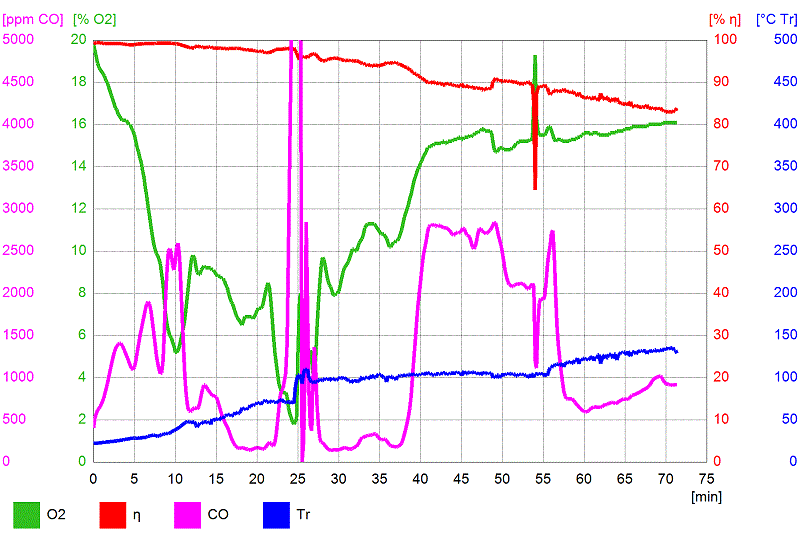 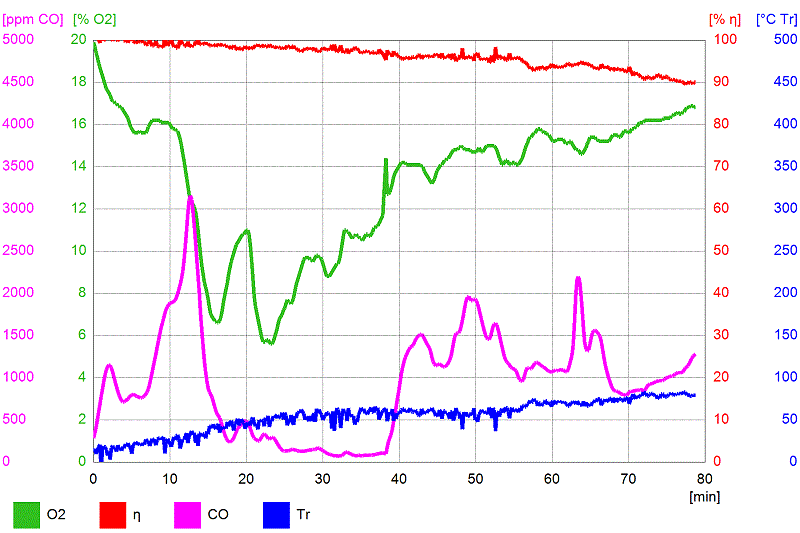 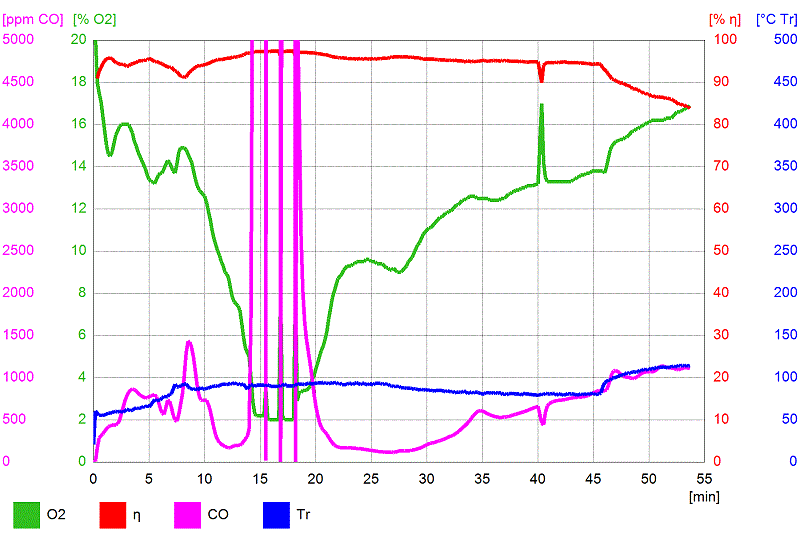 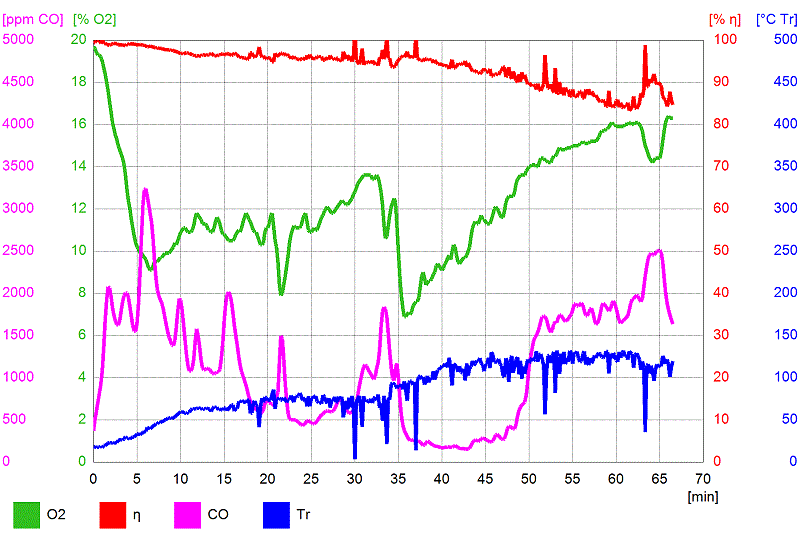 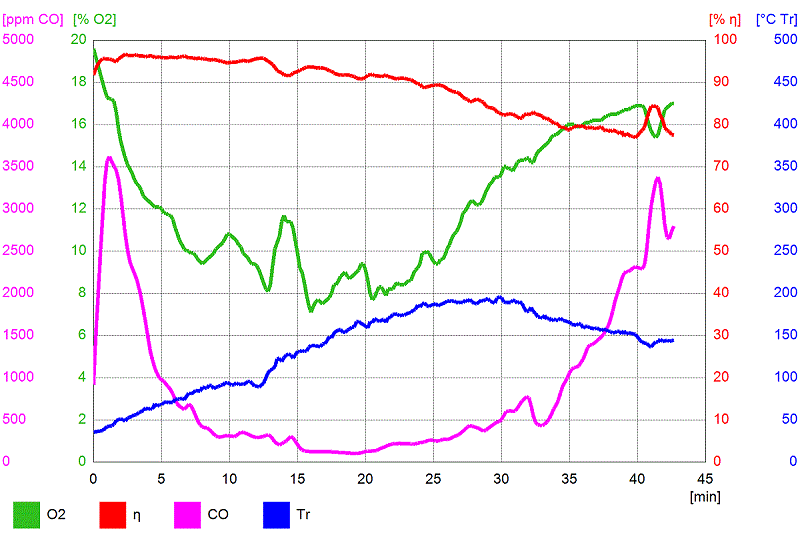 |
|
|
|
Post by matthewwalker on Jan 22, 2017 8:31:14 GMT -8
Maybe lay it on it's side?
edit: I do think it might work on it's side, but another thought Peter.....have you tried placing the secondary injection point to the back wall? I believe right now you are pushing the combustion downstream since that secondary can stream along the laminar face up the inside bend. Get it to have to go through the maelstrom to get out. Maybe.
edit edit: I drew a similar layout last year Peter, but with the first turn a 180 across the top of the firebox, all the way to the front, before a 90 up. Port into second 90 as well for double, double ram's horn action. Never built it, but, maybe you could pull your "second layer" all the way horizontal and forward.
|
|
|
|
Post by peterberg on Jan 22, 2017 10:02:46 GMT -8
Matt, I hope you don't mind, but it isn't clear to me what you are trying to say. Pointing the secondary injection to the back wal, which back wall? That of the firebox or the riser? As a matter of fact I tried to run the thing without secundary air, at all. Same sort of behaviour, but smokier this time. Even left out the channel once without seeing a difference. What I am trying to accomplish is a very compact core, the afterburner action confined to a relatively small space. That is what it does as far as I can see, when started cold it is entirely possible to see the refractory material behind the port glowing bright orange at the end of the run, like a lampoon.
Frankly, I don't see an advantage in having two ports and twice a double vortex action. In your application it could be beneficial, you are runnning your cooking range all day long, as I understand it. My application is to start it once or twice a day, getting very high operating temperatures where it matters in next to no time. To that end, I want the afterburner action as close to the pyrolysis area as possible. With two afterburner areas the core takes longer to heat up, which is OK when it is loaded back to back so the heating up phase is coupled to a long burn period. Different circumstances, different design goals.
What surprises me is the fact that the cast halves seems to stay whole, without cracks in sight.
|
|
|
|
Post by matthewwalker on Jan 22, 2017 11:02:43 GMT -8
Back wall of the firebox.
As for the longer flame path....I agree about heat up time, but....my opinion is that you need a little more time in the three T equation. We are already maxing temp, you've got turbulence, you just want to keep it all there for a moment longer when things are crazy to stabilize your charts. Just a guess!
|
|